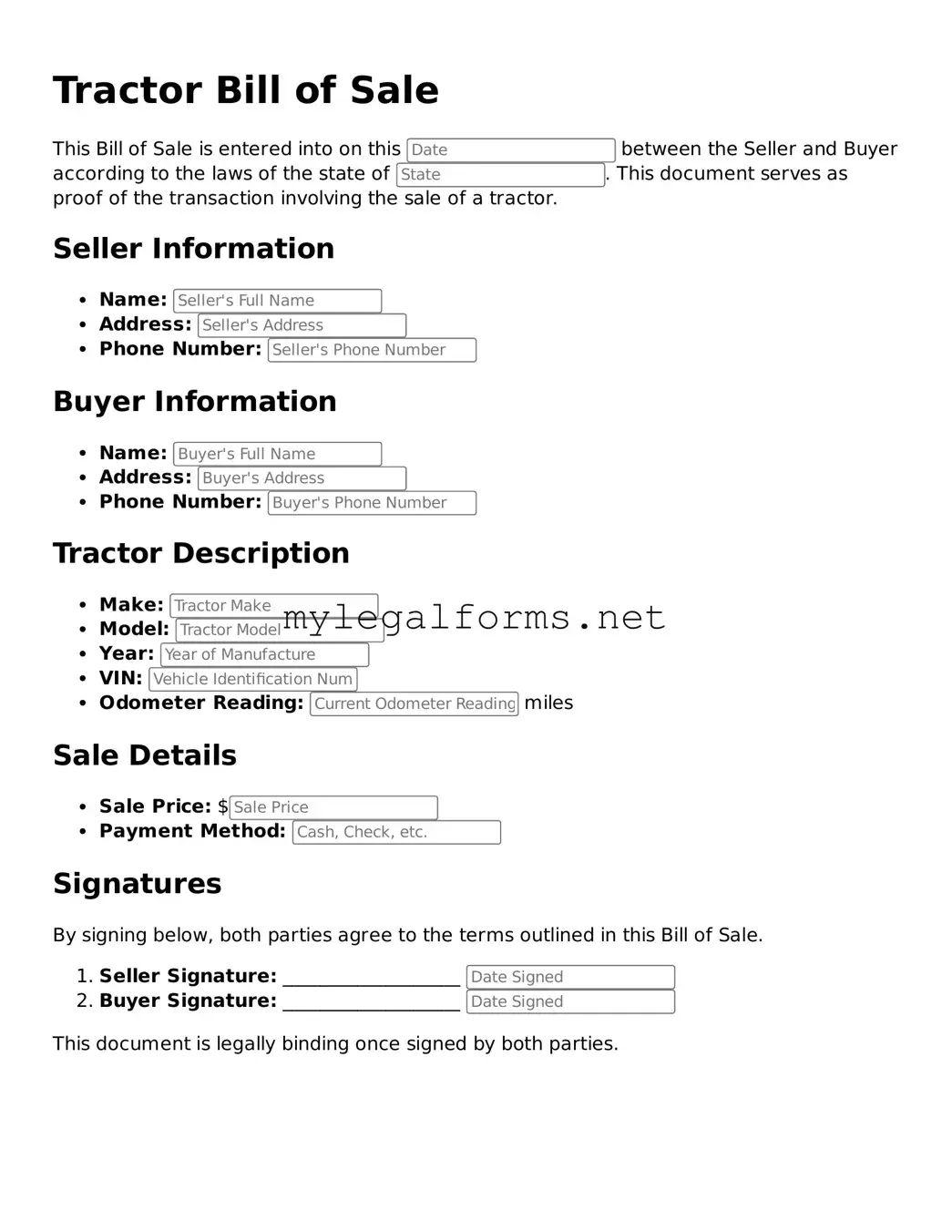Attorney-Approved Tractor Bill of Sale Form
A Tractor Bill of Sale is a legal document that facilitates the transfer of ownership of a tractor from one party to another. This form serves as proof of the transaction, detailing essential information about the buyer, seller, and the tractor itself. Understanding its components is crucial for ensuring a smooth transfer and protecting the interests of both parties involved.
Launch Tractor Bill of Sale Editor
